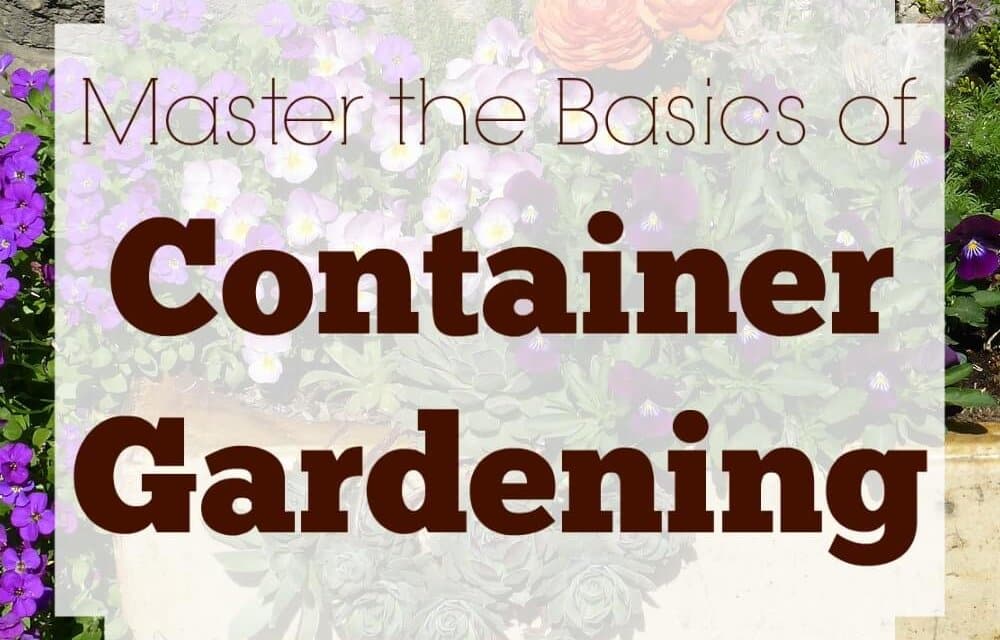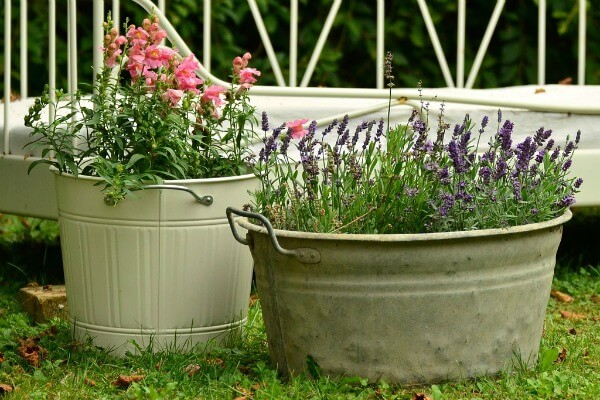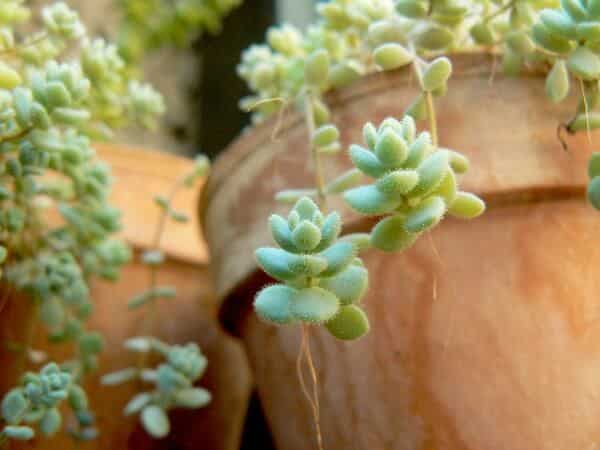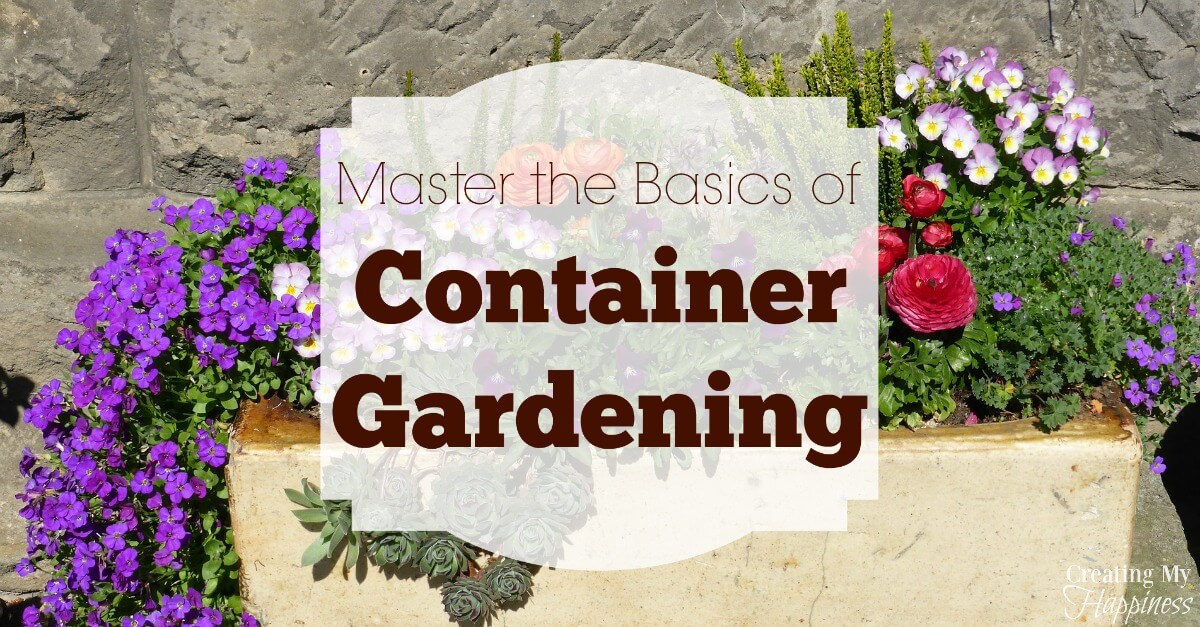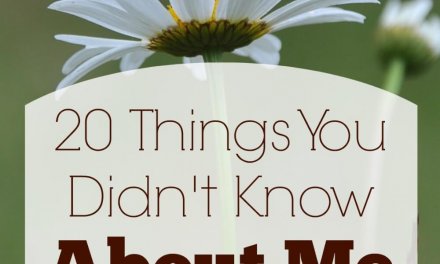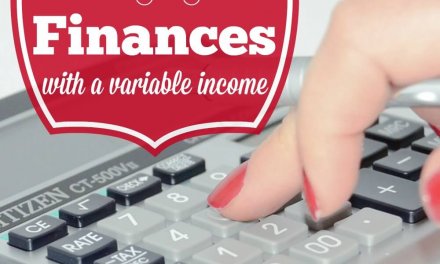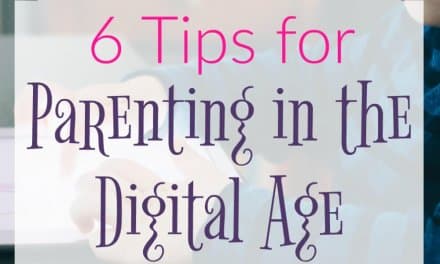Container gardening is a great option for people with limited space, city dwellers, or anyone looking for a manageable way to get into gardening. You can start with as many or as few plants as you like and grow from there. You can mix and match edible plants with decorative, and play around with placement, color, and levels. It’s a truly customizable gardening option!

Containers
Obviously, if you’re starting a container garden, you’re going to need containers. Be creative with your choices. It’s easy to get carried away with the beautiful options at your local garden center, but there’s no need to spend a fortune to get a beautiful container garden.
- Hit up your local flea market for containers with rustic appeal
- Clean out your garage and use old buckets, tubs, or paint cans
- Crates and other wooden boxes make great additions
- Upcycle an old sandbox or kiddie pool
- Repurpose a birdbath
- Old toy cars, watering cans, and even boots can become containers
Remember that your containers will need drainage, so be sure to drill a hole (or holes) into the bottom so your plants don’t drown.
Soil
I will fully admit, I had no idea what the difference between the different types of soil were, and I absolutely put whatever soil I had on hand in whatever place I was working at the time. Bad girl.
It turns out there is a difference between soils and a reason for using each in a specific place. For containers you want to be sure to use potting soil. Garden soil tends to hold moisture more, leading to root rot. Also, when it dries out it often forms a solid, clay-like soil that can strangle your plants.
In short, use potting soil.
You can save some money on potting soil by mixing it with homemade compost, and filling large containers with rocks first (this will also help with drainage). If you’re growing plants to eat I also suggest going organic with your soil.
Plants
Really, the sky’s the limit here. You can plant just about anything that you can plant in the ground in a container. So let’s talk about your choices.
Annuals have a life cycle of 1 growing season. Once they die, they’re gone. They tend to have more vibrant colors and lots of blossoms. The disadvantage, of course, is that you have to replant each year.
Perennials will return year after year, often growing bigger each year. They are generally hardy plants and easy to care for. They’re colors are not necessarily as vibrant as annuals, but their scents are often stronger.
Edibles are generally annuals, but some people (mostly in warmer climates) have luck maintaining them year round. The obvious advantage to edible plants is that you can eat them, and there’s nothing like food fresh from the garden. Edibles typically need regular tending to get the biggest harvest possible and they can often invite garden pests.
I recommend starting a container garden with a mix of annuals, perennials, and edible plants, especially if you’re new to gardening. Talk to an expert at your local garden center to find out what plants grow best in your area.
Care
Arrange your containers so that every plant gets the light it needs. Pay attention to the sun requirements when purchasing your plants. You may want to vary the heights and levels of your plants with tables or other features, just to keep it interesting.
Caring for a container garden isn’t much different from caring for a traditional garden. Water your plants according to the instructions, keep the containers free of dead leaves and flowers, and, if possible, giving the containers an occasional spin to expose all sides to a variety of light.
It’s as simple as that! Container gardens are wonderful way to dip your toe into the waters of gardening. Remember to choose your container, soil, and plants wisely and be sure to enjoy the fruits of your labor!

